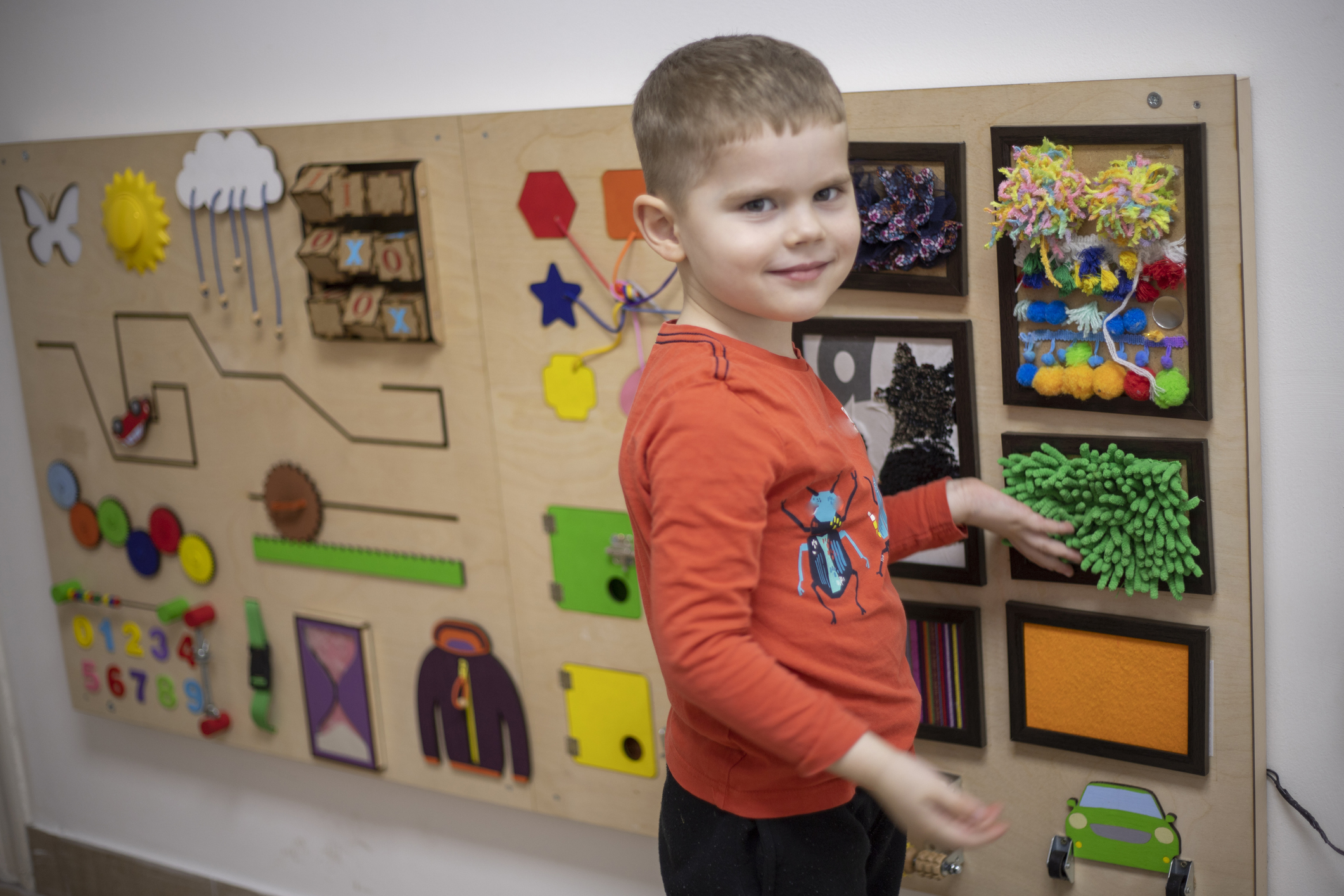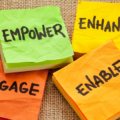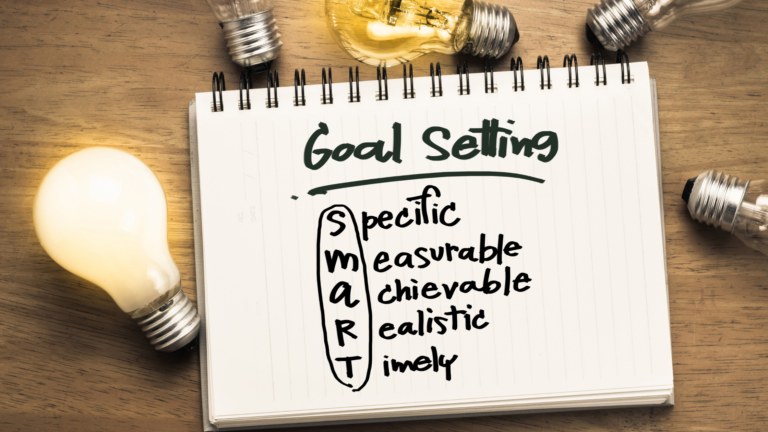In today’s fast-paced and ever-changing world, the ability to set goals and effectively plan for their achievement is a crucial skill for success. This is especially true in the field of education, where students are constantly faced with challenges and opportunities for growth. As educators, it is our responsibility to equip our students with the necessary tools and strategies to develop these skills.
In this blog post, we will explore the importance of promoting goal-setting and planning skills in the classroom. We will delve into the reasons why goal setting is essential in education and discuss techniques for effective classroom goal setting. Additionally, we will delve into the impact of good planning skills on academic performance and provide practical tools and strategies to improve planning skills.
Monitoring and evaluating students’ progress is an important aspect of promoting goal-setting and planning skills. We will explore methods of tracking students’ goal achievement, evaluate the effectiveness of implemented planning skills, and discuss the importance of providing constructive feedback.
Lastly, we will explore how to create a classroom environment that encourages goal-setting and planning, including involving parents and guardians in the process. We will also discuss ongoing reinforcement and recognition of achievements to instil a culture of goal setting and planning.
Join us on this journey as we delve into the world of promoting goal-setting and planning skills in the classroom. Let’s empower our students with the tools they need to become successful goal-setters and planners, ensuring a bright future for themselves.
Understanding the Importance of Goal Setting and Planning Skills
Setting clear goals and developing effective planning skills are essential for both personal and academic success. In this section, we will explore the importance of goal-setting and planning skills in the classroom and how they contribute to students’ overall development.
1.1 Why Goal Setting is Essential in Education
a) Motivation and Focus
Goal setting provides students with a sense of direction and purpose. When students have clear goals, they are more motivated to work towards achieving them. Goals help students stay focused on their priorities and prevent them from getting distracted by irrelevant tasks.
b) Improved Academic Performance
When students set specific academic goals, they are more likely to perform better in their studies. Goals can help students break down complex tasks into manageable steps, making it easier for them to stay organised and track their progress. By setting academic goals, students are also more likely to engage actively in their learning and take ownership of their education.
c) Building Resilience and Perseverance
Goal setting teaches students valuable life skills such as resilience and perseverance. When students encounter setbacks or obstacles, having clear goals helps them stay determined and continue working towards their objectives. This resilience will serve them well in their future endeavours.
d) Developing Self-Confidence
Achieving goals boosts students’ self-confidence and self-esteem. When students experience success in reaching their goals, they gain a sense of accomplishment and belief in their abilities. This positive reinforcement encourages them to set even higher goals and strive for excellence.
1.2 Techniques for Effective Classroom Goal Setting
a) SMART Goals
One effective technique for goal setting is using the SMART (Specific, Measurable, Achievable, Relevant, Time-bound) framework. This approach ensures that goals are well-defined, measurable, realistic, and have a clear deadline. By using SMART goals, students can create actionable plans and monitor their progress effectively.
b) Long-term and Short-term Goals
Encouraging students to set both long-term and short-term goals is important. Long-term goals provide a big-picture perspective and help students envision their future aspirations. Short-term goals, on the other hand, break down the long-term goals into smaller, manageable tasks, making them more attainable and measurable.
c) Individual and Collaborative Goal Setting
Allowing students to set both individual and collaborative goals promotes a sense of autonomy and teamwork. Individual goals cater to personal aspirations and growth, while collaborative goals foster cooperation, communication, and the development of interpersonal skills.
d) Regular Goal Review and Reflection
Regularly reviewing and reflecting on goals is essential for students’ progress. By encouraging students to revisit their goals periodically, they can assess their progress, make adjustments if necessary, and celebrate their accomplishments. This practice also helps students develop a habit of self-reflection and self-awareness.
In the next section, we will explore practical exercises that can be implemented in the classroom to promote goal-setting among students.
Implementing Goal Setting in the Classroom
Implementing goal setting in the classroom is key to helping students develop valuable skills and achieve success. In this section, we will explore various strategies and techniques to effectively incorporate goal-setting practices into the classroom environment.
1. Why Goal Setting is Essential in Education
Before diving into the implementation strategies, let’s briefly revisit the importance of goal setting in education. Setting goals helps students stay focused, motivated, and engaged in their learning. It teaches them skills such as time management, organisation, and perseverance, which are crucial for their academic and personal growth.
2. Techniques for Effective Classroom Goal Setting
To ensure that goal setting is impactful and meaningful for students, it is important to employ effective techniques. Here are some strategies to consider:
a) Collaborative Goal Setting
Encourage students to set goals collectively within the classroom. This promotes a sense of community, cooperation, and accountability among students. By involving students in the goal-setting process, they feel more invested and motivated to work towards shared objectives.
b) Individualized Goal Setting
Recognise the unique needs and aspirations of each student by allowing them to set individual goals. This helps students take ownership of their learning and tailor their goals to their interests and strengths. Individualized goal setting also promotes self-reflection and self-directed learning.
c) Clear and Specific Goals
Guide students in setting clear and specific goals that are easily understandable and measurable. Vague goals can lead to confusion and lack of focus. Encourage students to identify specific actions and outcomes they want to achieve, making it easier to track progress and evaluate success.
d) Goal Breakdown and Action Plans
Assist students in breaking down their goals into smaller, manageable steps. This breakdown helps students develop action plans, outlining the necessary tasks and timelines to achieve their goals. By breaking goals into achievable milestones, students experience a sense of progress and accomplishment along the way.
3. Practical Exercises for Goal Setting
To make goal setting more practical and applicable in the classroom, consider implementing the following exercises:
a) Vision Board Creation
Have students create vision boards that visually represent their goals and aspirations. Provide magazines, art supplies, and other materials for students to express their goals creatively. Display these vision boards in the classroom to serve as a constant reminder of the students’ aspirations.
b) Goal Reflection Journals
Introduce goal reflection journals or notebooks for students to document their progress, challenges, and reflections on their goals. Encourage regular journal entries to foster self-awareness, self-reflection, and a growth mindset. Use these journals as a tool for students to track their achievements and identify areas for improvement.
c) Peer Accountability Partnerships
Pair students up as accountability partners to support each other in achieving their goals. Students can regularly check in with their partners, discuss progress, offer encouragement, and provide constructive feedback. This peer support system fosters a collaborative and supportive classroom environment.
d) Goal Celebration and Recognition
Create opportunities to celebrate and recognise students’ goal achievements. This can be done through classroom ceremonies, certificates, or acknowledgements. Celebrating successes not only motivates the achievers but also inspires other students to work towards their own goals.
By implementing these strategies and exercises, educators can effectively integrate goal-setting into the classroom and empower students to take charge of their education. In the next section, we will explore how to promote planning skills alongside goal setting to further enhance students’ academic performance.
Promoting Planning Skills in the Classroom
Promoting planning skills in the classroom is essential for students to effectively manage their time, resources, and tasks. In this section, we will explore the impact of good planning skills on academic performance and provide practical tools, strategies, and activities to enhance planning skills among students.
1. The Impact of Good Planning Skills on Academic Performance
Developing strong planning skills has a significant positive impact on students’ academic performance. Here are some ways in which good planning skills contribute to academic success:
a) Improved Time Management
Effective planning helps students allocate their time wisely, ensuring that they have sufficient time for studying, completing assignments, and engaging in extracurricular activities. By managing their time effectively, students can reduce procrastination and avoid last-minute rushes, leading to higher-quality work and reduced stress levels.
b) Enhanced Organisation
Planning skills promote organisation, allowing students to keep track of deadlines, materials, and resources needed for their academic tasks. With proper organisation, students can access necessary materials easily, maintain tidy workspaces, and avoid the loss of important information, leading to increased efficiency and productivity.
c) Increased Productivity and Focus
Through planning, students can prioritise their tasks and set realistic goals for completion. This helps them stay focused on their objectives and avoid getting overwhelmed by multiple assignments or projects. By breaking down tasks and creating a structured plan, students can work efficiently and accomplish more in less time.
d) Improved Task Completion Rates
When students have a well-developed plan in place, they are more likely to complete their tasks within the given timeframe. This leads to a higher task completion rate and a sense of achievement, boosting students’ motivation and confidence in their abilities.
2. Tools and Strategies to Improve Planning Skills
To foster effective planning skills among students, utilise the following tools and strategies:
a) Planners and Calendars
Provide students with planners or calendars to visually organise their tasks, deadlines, and commitments. Encourage them to record assignments, exams, and other important dates in these tools. Teach them how to break down large tasks into smaller bite size pieces, more manageable subtasks and allocate specific time slots for each.
b) Time Management Techniques
Introduce students to various time management techniques, such as the Pomodoro Technique, where work is divided into focused intervals followed by short breaks. Teach them to prioritise tasks based on urgency and importance using methods like the Eisenhower Matrix. These techniques help students make the most of their time and work effectively.
c) Task Prioritization and To-Do Lists
Teach students how to prioritise their tasks by importance and deadline. Encourage them to create to-do lists, either on paper or digitally, to outline their daily or weekly tasks. Emphasise the importance of revisiting and updating these lists regularly to adapt to changing priorities.
d) Chunking and Scheduling
Guide students to break down large tasks into smaller, manageable chunks. Help them develop a schedule by assigning specific time slots for each chunk. This practice helps students focus on one task at a time, reducing overwhelm and increasing productivity.
3. Classroom Activities to Strengthen Planning Skills
Reinforce planning skills through engaging in classroom activities:
a) Project-Based Learning
Assign project-based tasks that require students to plan, manage their time, and organize resources effectively. These projects can be individual or group-based and can span over an extended period, allowing students to develop and refine their planning skills.
b) Simulated Timed Tasks
Create simulated timed tasks or activities that challenge students to manage their time effectively. For example, provide a set of questions or tasks with a specific time limit and encourage students to plan their approach and complete the task within the given time frame.
c) Goal-Oriented Group Activities
Engage students in goal-oriented group activities where they must plan and work together to achieve a common objective. This allows them to practice collaboration, task distribution, and effective planning within a team setting.
d) Reflection and Evaluation Exercises
Incorporate reflection and evaluation exercises after completing assignments or projects. Encourage students to reflect on their planning strategies, identify areas for improvement, and set goals for future tasks. This helps students develop a growth mindset and continuously refine their planning skills.
By implementing these tools, strategies, and activities, educators can promote effective planning skills in the classroom, enabling students to become more organised, focused, and successful in their academic pursuits. In the next section, we will explore methods of monitoring and evaluating students’ progress towards their goals.
Monitoring and Evaluating Students’ Progress
Monitoring and evaluating students’ progress is a crucial aspect of promoting goal-setting and planning skills in the classroom. In this section, we will explore various methods of tracking students’ goal achievement, evaluating the effectiveness of implemented planning skills and providing constructive feedback to support their continuous growth.
1. Methods of Tracking Students’ Goal Achievement
To effectively monitor students’ progress towards their goals, consider implementing the following methods:
a) Progress Journals or Portfolios
Encourage students to maintain progress journals or portfolios where they document their journey towards their goals. These journals can include reflections, samples of work, self-assessments, and evidence of progress. Regularly review these journals to gain insights into students’ achievements and areas for improvement.
b) Checklists and Rubrics
Utilise checklists or rubrics to assess students’ goal achievement. These tools provide clear criteria for success and allow for easy tracking of progress. Students can self-assess and evaluate their progress based on the provided checklist or rubric, promoting self-reflection and accountability.
c) Formative Assessments
Incorporate formative assessments aligned with students’ goals to gauge their understanding and progress. These assessments can be in the form of quizzes, presentations, projects, or discussions. Use the results of these assessments to identify areas where students may need additional support or guidance.
d) One-on-One Conferences
Conduct regular one-on-one conferences with students to discuss their goals, progress, and challenges. These conferences provide an opportunity to provide personalised feedback, address any concerns, and set new targets. It also allows students to actively participate in the evaluation process and express their needs.
2. Evaluating the Effectiveness of Implemented Planning Skills
To evaluate the effectiveness of the planning skills implemented in the classroom, consider the following approaches:
a) Assessing Time Management
Observe students’ ability to manage their time effectively by monitoring their task completion rates, meeting deadlines, and tracking their progress. Analyse patterns of behaviour and provide feedback on areas where students may need improvement or strategies to enhance their time management skills.
b) Reviewing Organisation and Task Execution
Evaluate students’ organisation skills and their ability to execute tasks efficiently. Assess how well they plan and prioritise their work, maintain neat and organised materials, and meet the requirements of assignments or projects. Provide feedback on areas where students can enhance their organisational strategies.
c) Analysing Goal Attainment
Review students’ progress towards their goals and assess their success in achieving them. Analyse the specific actions taken, milestones reached, and the overall impact of their goal-setting and planning efforts. Provide constructive feedback on areas where students can refine their strategies or set more realistic goals.
3. Providing Constructive Feedback
Constructive feedback plays a vital role in supporting students’ growth and development. Here are some strategies for providing effective feedback:
a) Specific and Actionable Feedback
Provide specific feedback, highlighting strengths and areas for improvement. Ensure that feedback is actionable, giving students clear guidance on how they can enhance their goal-setting and planning skills.
b) Timely Feedback
Offer feedback promptly, enabling students to make adjustments and improvements promptly. Prompt feedback also demonstrates your commitment to their progress and motivates them to continue working towards their goals.
c) Balance of Positive and Constructive Feedback
Maintain a balance between positive reinforcement and constructive criticism. Acknowledge students’ achievements and efforts while also guiding areas that need improvement. This balance helps students maintain motivation and confidence while striving for growth.
d) Encouraging Self-Reflection
Promote self-reflection by asking students to reflect on their progress and provide self-assessments. Encourage them to identify strengths, areas for improvement, and strategies they can implement to enhance their goal-setting and planning skills. Support their self-reflection with personalised feedback and guidance.
By implementing these methods of monitoring, evaluating, and providing feedback, educators can support students in their goal-achievement journey and help them develop strong goal-setting and planning skills. In the next section, we will explore how to create a classroom environment that fosters a culture of goal-setting and planning.
Instilling a Culture of Goal Setting and Planning
Instilling a culture of goal setting and planning in the classroom is essential for creating an environment that supports and nurtures students’ development. In this section, we will explore strategies for creating a classroom environment that encourages goal setting and planning, involving parents and guardians in the process, and providing ongoing reinforcement and recognition of achievements.
1. Creating a Classroom Environment that Encourages Goal Setting and Planning
To foster a culture of goal setting and planning, consider implementing the following strategies:
a) Establish Clear Expectations
Set clear expectations regarding goal setting and planning from the beginning of the academic year. Communicate the importance of these skills and how they contribute to students’ success. Create a positive and supportive classroom atmosphere that encourages students to set meaningful goals and develop effective planning strategies.
b) Model Goal Setting and Planning
Lead by example and model goal setting and planning in your work as an educator. Share your goals and planning techniques with students, demonstrating the practical application of these skills. This modelling helps students understand the value of goal setting and planning in real-life scenarios.
c) Provide Resources and Tools
Ensure that students have access to the necessary resources and tools to support their goal-setting and planning efforts. This includes providing planners, calendars, goal-setting worksheets, and other relevant materials. Make these resources readily available and encourage students to use them to organise their tasks and track their progress.
d) Encourage Collaboration and Support
Promote a collaborative and supportive classroom environment where students can share their goals, seek advice, and support each other’s progress. Encourage students to work in pairs or small groups to discuss their goals, share strategies, and hold each other accountable. Foster a sense of community and teamwork to enhance the goal-setting experience.
2. Involving Parents and Guardians in the Process
Engaging parents and guardians in the goal-setting and planning process strengthens the support system for students. Consider the following strategies:
a) Communicate Goal-Setting Practices
Inform parents and guardians about the goal-setting and planning practices implemented in the classroom. Share the importance of these skills and how they contribute to students’ academic success. Provide resources or workshops for parents to understand how they can support their child’s goal-setting and planning at home.
b) Collaborative Goal-Setting Meetings
Organise collaborative goal-setting meetings with parents, students, and educators. These meetings provide an opportunity for open communication and alignment of goals between home and school. Discuss individual student goals, share progress updates, and seek input from parents on how they can support their child’s goal-setting and planning.
c) Regular Progress Updates
Keep parents informed about their child’s progress towards their goals. Provide regular progress updates through newsletters, emails, or parent-teacher conferences. This ongoing communication ensures that parents are aware of their child’s efforts, achievements, and areas for improvement, allowing them to provide appropriate support and encouragement.
3. Ongoing Reinforcement and Recognition of Achievements
To reinforce the importance of goal setting and planning, as well as motivate students to continue their efforts, consider the following approaches:
a) Celebrate Milestones and Achievements
Recognise and celebrate students’ milestones and achievements along their goal-setting journey. This can be through classroom celebrations, certificates, or small rewards. Acknowledging their progress reinforces their motivation and builds a positive classroom culture around goal setting and planning.
b) Peer Recognition and Support
Encourage students to recognise and support their peers’ goal achievements. Provide opportunities for students to share their successes with others, fostering a supportive and encouraging classroom community. Peer recognition promotes a culture of celebration and inspires other students to work towards their goals.
c) Reflection and Growth Assessments
Engage students in regular reflection exercises to assess their growth and progress. Encourage them to reflect on the effectiveness of their goal-setting and planning strategies, identify areas for improvement, and set new targets. This reflection helps students develop a growth mindset and continuously refine their skills.
d) Continuous Feedback and Encouragement
Provide ongoing feedback and encouragement to students as they work towards their goals. Offer praise for their efforts, acknowledge their progress, and provide constructive feedback to support their development. Regular feedback shows students that their goals and planning skills are valued and reinforces their commitment to continuous improvement.
By implementing these strategies, educators can create a classroom environment that fosters a culture of goal-setting and planning. Involving parents and guardians in the process and providing ongoing reinforcement and recognition of achievements further strengthens students’ commitment to their goals. As we conclude this blog post, let us remember that by promoting goal-setting and planning skills, we empower our students with the tools they need to navigate their educational journeys and achieve success in all aspects of their lives.
Related posts:
 Creating Safe Spaces: Strategies for Fostering Healing and Support in Trauma-Informed Classrooms
Creating Safe Spaces: Strategies for Fostering Healing and Support in Trauma-Informed Classrooms
 Creating Safe Spaces: Strategies for Fostering Healing and Support in Trauma-Informed Classrooms
Creating Safe Spaces: Strategies for Fostering Healing and Support in Trauma-Informed Classrooms
 Addressing Behaviour through a Trauma-Informed Lens: Strategies for Cultivating Positive Classroom Culture
Addressing Behaviour through a Trauma-Informed Lens: Strategies for Cultivating Positive Classroom Culture
 Enhancing Working Memory: Tools and Activities for Improved Student Learning
Enhancing Working Memory: Tools and Activities for Improved Student Learning




